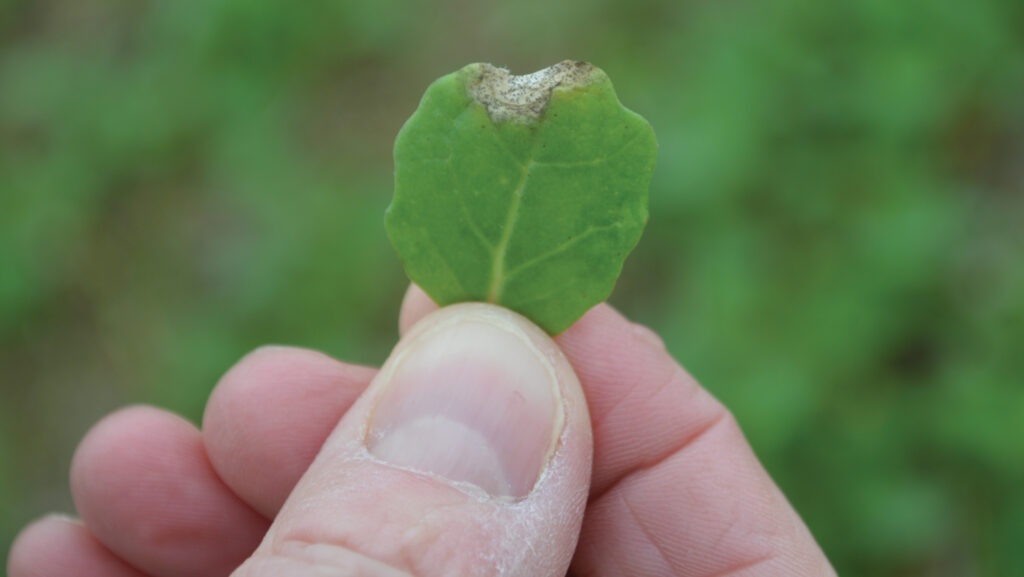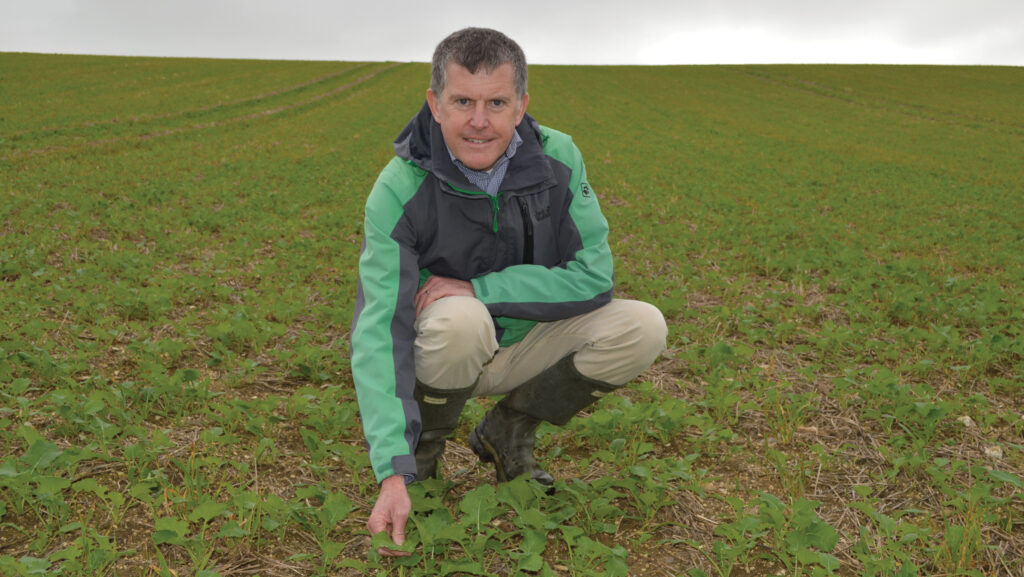OSR growers alerted to the threat of phoma leaf spot
 Phoma © David Jones
Phoma © David Jones Oilseed rape growers are being urged to examine crops for phoma leaf spot as the current wet weather is likely to encourage a disease which can cut yields by up to 0.5t/ha.
Recent rainfall is likely to have increased the risk from the disease which favours wet and warm weather, and early infection is likely to lead to the biggest yield losses.
Mike Thornton, head of crop production at agronomy group ProCam, warns that the change to wetter weather this autumn should highlight the disease threat to growers, especially in the warmer areas of southern England.
See also: How growers returned environmental schemes back to cropping

Mike Thornton © David Jones
Change in weather
“With the change in the weather towards more rain then growers should be on the alert for phoma in oilseed rape crops,” he tells Farmers Weekly.
His agronomy team has not seen any serious signs of phoma from Kent to Chichester, along the south coast, but this is a relatively high-risk area as showers coming in from the English Channel can help spread the disease.
Dry and breezy early autumn weather in some fairly open crops has kept the disease largely at bay up to mid-October, but now the disease could development as it is spread by rain splashes.
The latest advice from the AHDB is to treat varieties with low-to-medium resistance to phoma when 10% of plants show symptoms, while looking for a higher 20% threshold for a variety with better resistance.
Varietal resistance
Most rapeseed varieties on the AHDB’s Recommended List have medium resistance scores of 5-7 to phoma/stem canker, in a 1-9 system where 9 shows high resistance and 1 is susceptible.
There are only three hybrid varieties with 8 and 9 scores – Maverick (9), Murray (8) and Vegas (9). Some popular varieties have lower scores such as Aurelia (4), Ambassador (6) and Attica (5).
Looking at an oilseed rape crop at one of his client’s farms high on the South Downs, above Brighton, in mid-October, Mike could only see the occasional sign of phoma on a crop drilled in mid-August.
“However, with recent rain we will be looking very closely at crops throughout the second half of October,” he says.
Phoma can develop in the autumn during warm, wet and humid weather, when infected stubbles release airborne spores which can land on the leaves of young susceptible oilseed rape plants.
Phoma spots generally start to show on infected leaves after at least 20 days of rainfall in August and early September. These spots develop on the upper side of the leaf containing dark specks, known as pycnidia.
The leaf spots have minimal impact on crop growth and yield, but if the pathogen grows along the leaf petiole to the stem, it can produce cankers in the stems causing yield loss.
These yield-robbing cankers make phoma one of the most important diseases of winter oilseed rape in the UK, especially in central, southern and eastern England, says the AHDB.
Autumn disease treatment to control phoma and light leaf spot, largely relies on three relatively inexpensive azole fungicides – difenoconazole, prothioconazole and tebuconazole.
The first, difenoconazole, is effective against just phoma, prothioconazole is active against both, while tebuconazole has some activity against light leaf spot and also has plant growth regulator properties to control the height of well-advanced crops.
Difenoconazole can be used against early infections of phoma, but if phoma is not severe then a later spray of prothioconazole in November is effective against both diseases. Light leaf spot tends to favour wet but cooler weather than phoma, so tends to develop later in November onwards.
Azole fungicides often used on oilseed rape in the autumn
- Difenoconazole (Plover plus other brands)
- Prothioconazole (Proline plus other brands)
- Tebuconazole (Toledo, Folicur plus other brands)

